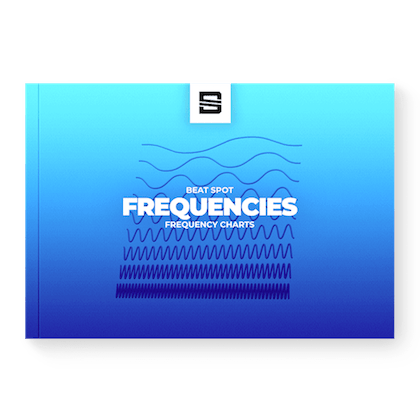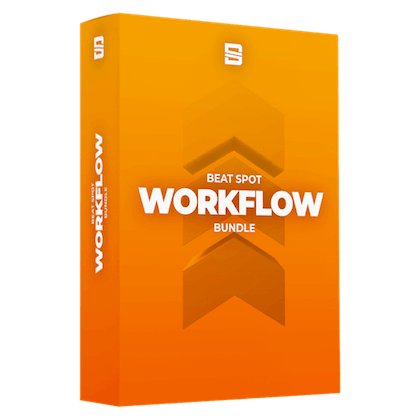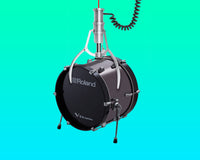Table of Contents
In this article, I’m listing the 10 best tips about mixing drums that every producer/engineer should know, even producers that are not that much into mixing.
Knowing these pieces of info allows approaching drums mixing-wise more knowingly.
What are drums?
Drums are the backbone of music, and they include a variety of different sounds, spanning from kick drums to snares, from cymbals to percussions. Nailing drums in the mix is half of the work, and while drums aren’t easy to deal with, we hope that these tips might make your mixing experience easier.
Learn more about drums
If you want to learn more about how to mix drums (and much more), then you might be interested in our Levels, Frequencies, and Panorama products.
The 10 best drums mixing tips
Now let's go with the tips:
Tuning
First things first, drums should be tuned properly, and while that’s not a strictly mixing thing, proper tuning affects the way drums sounds and are mixed.
If you ever come across drums that aren’t tuned nicely, opt for frequency shifting or any tuning plugin at your disposal to solve such problem.
Beware tuning too much, as an engineer, you still want the drums to have some fidelity to the original version.

Leveling
Levels are crucial, especially relative ones. You want to find a balance among the kick, snare, claps, cymbals, etc. before proceeding with actual mixing.
Making sure everything is at the right level will make sure that the majority of EQ and compression will be applied to improve the overall sound rather than fixing leveling problems.

Panning
Panning isn’t “crucial” per se, but it’s still required, also because it’s a great opportunity for achieving width and movement in the stereo image.
Generally, kick and snare are centered as they’re the most impacting elements in a drum kit.
Cymbals and percs are where you can have fun, spacing them across the stereo field the higher you go in the stereo field.
If you have toms, then it’s mandatory to place each hit differently.
If you have a live drum kit, the approach should be to replicate the placement of each hit.

Bus first
Instead of getting lost in the sauce making each individual sound right from the start, try respecting the original vision and improve it as a whole.
By doing so, you’ll focus on making everything better rather than “theoretically perfect”.
See the drum kit as an instrument rather than a group of sounds.
Getting used to this approach will make your life easier when you’ll have to deal with stems featuring all the drums merged together.
Once you’ve achieved the sound you are looking for, you can apply some corrective processing on individual channels to solve problems that couldn’t be nailed from the drum bus.

Be subtle
Drum kits are delicate groups of sounds due to the difference in volume among individual channels and also due to the very different frequency content between, let’s say, the kick drum and a hi-hat.
Applying subtle processing allows maintaining objectivity during the process and also have predictable results when applying changes to individual sounds.
Setting a compressor that triggers too hard might lead to inconsistent results when you apply some EQ or else on the hits that are triggering it the most.

Sidechain Filter and Multiband Processing
To continue the “being subtle” thing, considering the variety of content in the frequency spectrum, you have options to target specific frequency ranges and ignore others.
Sidechain filter allows ignoring specific frequency ranges, especially the low end, which is the one that carries the most energy, and it even allows to make some frequencies overtrigger the compressor or any other processor.
Multiband processing allows doing a similar thing, but in a more elastic way, processing different frequency ranges differently all within a single processor.
However, don’t overdo it as it’s easy to mess up the balance within the spectrum.

Parallel Processing
If you can’t keep yourself from going hard, then do it in parallel!
Parallel processing is the way to go to fix problems or improve things that can’t be done with inserts. There’s no strict rule here except one: dial in the parallel channels lightly as you don’t want them to take over the original sound.

Reverb
Unless you’re mixing a drum kit that already has some room sound in it, you’ll need some reverb to not make it sound dry and unglued.
Some reverb is key to make the drum kit sound cohesive and bigger. Just a tiny amount can do wonders at making the drum kit sound more engaging and authentic.
The key here is to experiment different reverb types, different settings and different amounts of volume of the reverb signal.

Mix in context
You might have heard this piece of advice countless times, and that’s because it’s worth doing so. Mixing drums isn’t only about making the sound good, but it’s also about making them fit the rest of the track. Having them too soft or too powerful won’t help the mix overall, even if they sound good on their own.

Sample replacement
This is a very nice scenario, and something I wouldn’t do generally, but there might be times where such a fix can solve the entire mix.
You can do this by extracting MIDI data with some features of your DAW, or you can use a sample replacement plugin.

Beat Spot Mixing Tips
If you’ve found these tips helpful, then you’ll definitely appreciate all the knowledge we’ve packed into our Mixing Tips PDF with a section dedicated to drums among several chapters!









